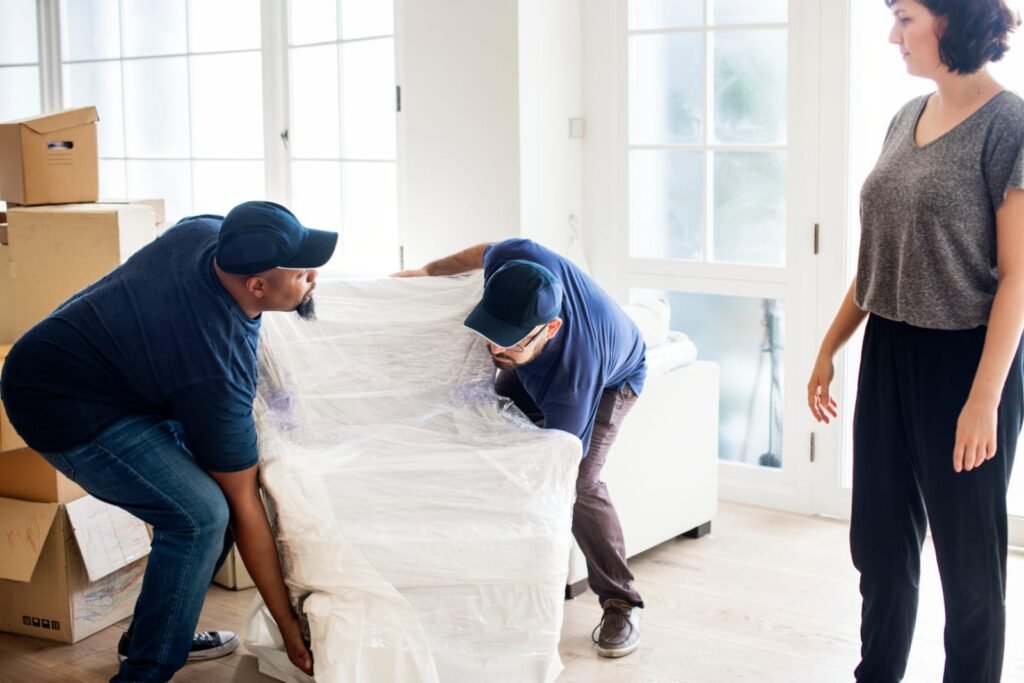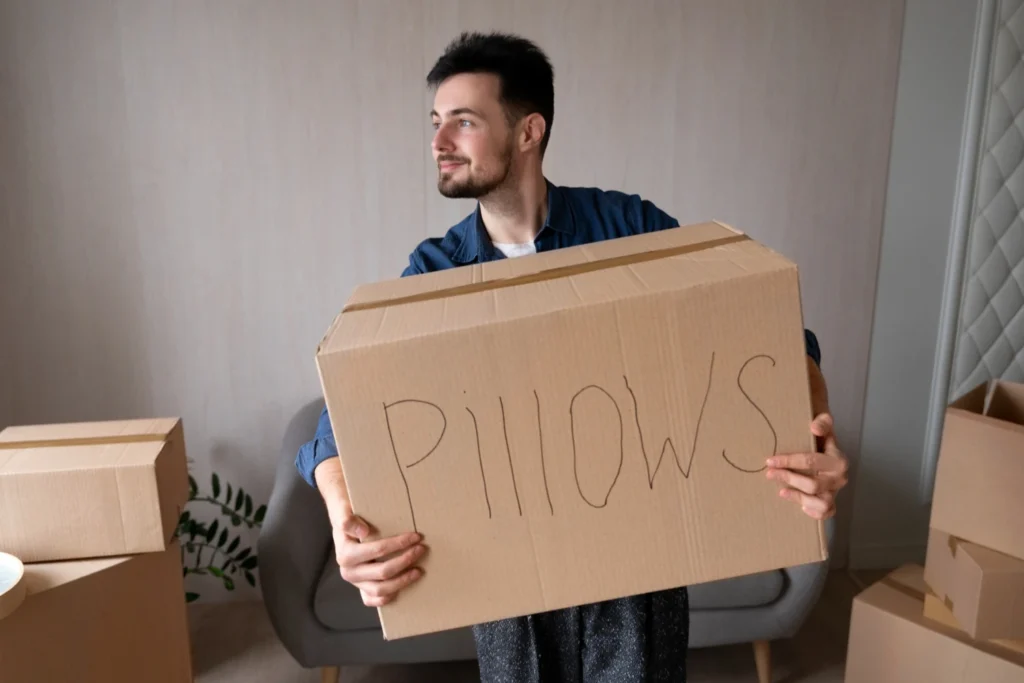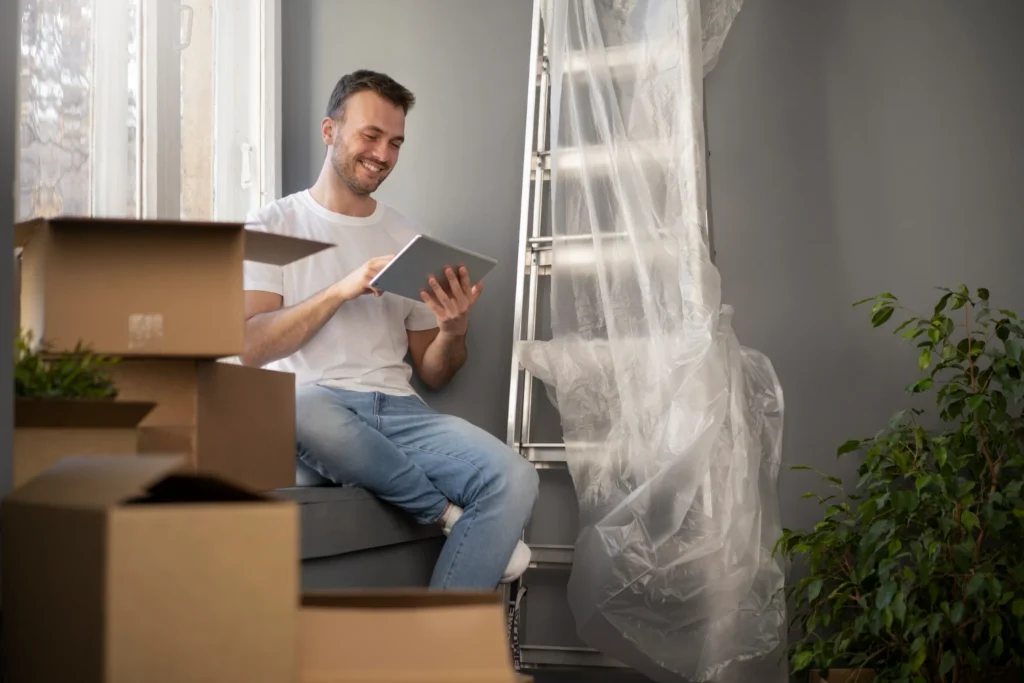When storing furniture, it’s not just about finding space; it’s about protecting your items from damage caused by humidity, extreme temperatures, dust, and pests. Climate-controlled storage units, especially when used with portable and storage movers, offer the safest environment for long-term preservation. These movers can transport your belongings directly into storage with minimal handling, reducing the risk of damage. But remember, packing your furniture correctly is just as important. This detailed guide will show you exactly how to pack furniture for climate-controlled storage the right way.
Why Choose Climate-Controlled Storage for Furniture?
Unlike standard storage units, climate-controlled units maintain a steady temperature and humidity level. This helps prevent moisture buildup, mold, and material deterioration.
Key Benefits:
- Protects wood from warping and cracking
- Preserves leather and fabric from drying out or molding
- Reduces the risk of rust on metal parts
- Keeps pests and dust under control
- Ideal for antiques, heirlooms, and delicate finishes
Step-by-Step Guide to Packing Furniture for Storage

Whether you’re storing furniture short-term or for the long haul, these steps ensure your items remain in top condition.
1. Clean All Furniture Thoroughly
Dirt, dust, or moisture can become trapped during storage and cause lasting damage. Clean each item based on its material:
- Wood: Use a wood cleaner or mild soap and water. Dry completely.
- Upholstery: Vacuum thoroughly and spot clean with fabric-safe cleaners.
- Leather: Wipe with a leather conditioner to prevent drying and cracking.
- Metal: Use a rust-prevention spray or oil on metal parts.
Allow everything to dry fully before wrapping or packing.
2. Disassemble Larger Furniture Pieces
Disassembling furniture makes packing easier and reduces the risk of breakage during transport or storage.
- Remove table legs, shelves, and cushions
- Detach headboards and mirrors
- Keep hardware (screws, bolts, washers) in labeled bags taped to the furniture
This helps maximize space and protect fragile joints.
3. Wrap and Protect Each Item
Proper wrapping prevents scratches, dust accumulation, and moisture damage.
Recommended Packing Materials:
- Moving blankets or padded covers: For wood and leather surfaces
- Bubble wrap: For legs, corners, and delicate attachments
- Plastic wrap (used sparingly): Only over padded materials, never directly on furniture
- Couch and mattress covers: Breathable fabric ones are best to avoid mildew
Avoid sealing furniture in plastic, especially in humid areas, as it can trap moisture and lead to mold.
4. Elevate Furniture Off the Ground
Storage units, even climate-controlled ones, can allow condensation to form on concrete floors.
- Use wooden pallets, plastic risers, or moving dollies to lift furniture off the ground
- This helps airflow and reduces exposure to cold or moisture buildup
5. Arrange Items Smartly in the Storage Unit
How you place your furniture in storage matters for long-term care.
- Place heavier furniture at the back of the unit
- Store couches and mattresses vertically to save space (with proper support)
- Avoid stacking heavy items on upholstered or soft surfaces
- Leave gaps between items and walls to allow air to circulate
Label everything clearly and keep a small path for easy access.
Specific Tips by Furniture Type
Different materials and furniture types have unique packing needs. Here’s how to handle each:
Wooden Furniture
Wood is particularly sensitive to moisture and temperature swings.
- Wax or polish wood before storage to retain natural oils
- Use moving blankets and avoid tight wrapping
- Don’t stack other items on top of wooden surfaces
Upholstered Furniture
Upholstery absorbs moisture and odors easily.
- Vacuum and clean fabric thoroughly
- Use breathable covers or cloth sheets
- Store cushions separately if possible, in vacuum-sealed bags
Leather Furniture
Leather is prone to drying, cracking, or sticking to plastic.
- Condition before wrapping
- Cover with fabric or moving blankets, avoid plastic wrap
- Store in an upright position without stacking
Glass Furniture or Components
Glass parts are fragile and must be packed with extreme care.
- Wrap in bubble wrap, then in cardboard for added protection
- Store vertically in a secure corner to avoid pressure or impact
- Label clearly as FRAGILE
Common Mistakes to Avoid
Even with the right storage unit, poor packing can still lead to damage.
- Don’t wrap furniture in plastic directly
- Don’t skip cleaning before storage
- Don’t stack heavy items on delicate pieces
- Don’t place furniture directly on the ground
- Don’t overfill the unit; air circulation is key
How Long Can You Store Furniture in Climate-Controlled Units?
Climate-controlled storage is ideal for both short-term and long-term needs. Whether you’re storing items for a few months or several years, the environment will remain stable and protective.
- Short-Term Storage: Great for transitional moves or seasonal items
- Long-Term Storage: Perfect for heirlooms, downsizing, or excess inventory
Just check periodically to ensure everything is still in great shape.
Book Climate-Controlled Furniture Storage with AFA Movers
At AFA Movers, we don’t just move your belongings; we help you protect them. Our team specializes in packing, transporting, and storing furniture with expert care. We offer:
- Professional packing services using high-grade materials
- Secure climate-controlled storage units for all furniture types
- Safe handling and disassembly of bulky or delicate pieces
- Friendly support throughout the moving and storage process
Whether you’re downsizing, relocating, or just making room at home, we’ll make sure your furniture stays safe, clean, and damage-free.
Book your storage and moving service with AFA Movers today!
Call us now or request a free quote online and discover the stress-free way to store furniture long-term.



